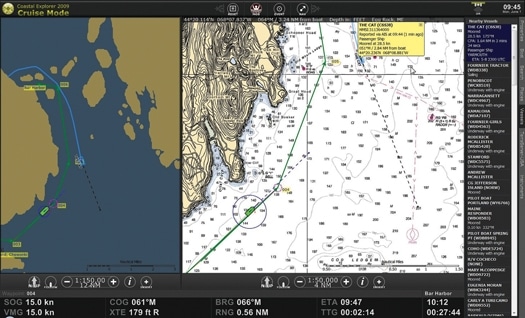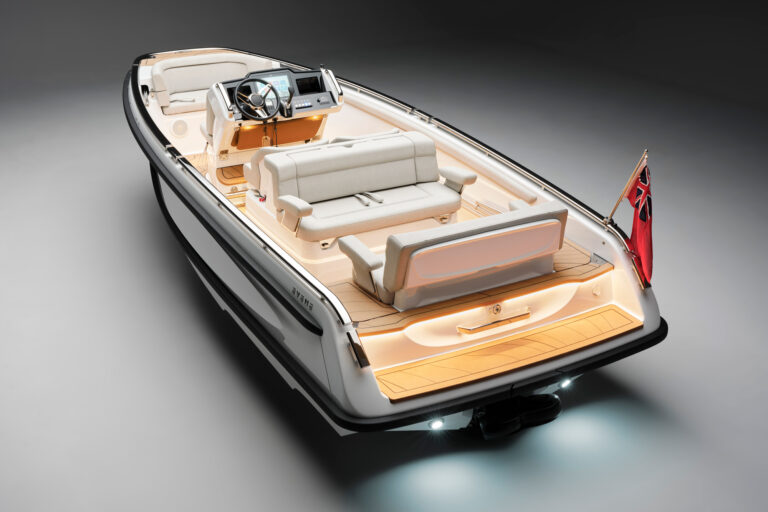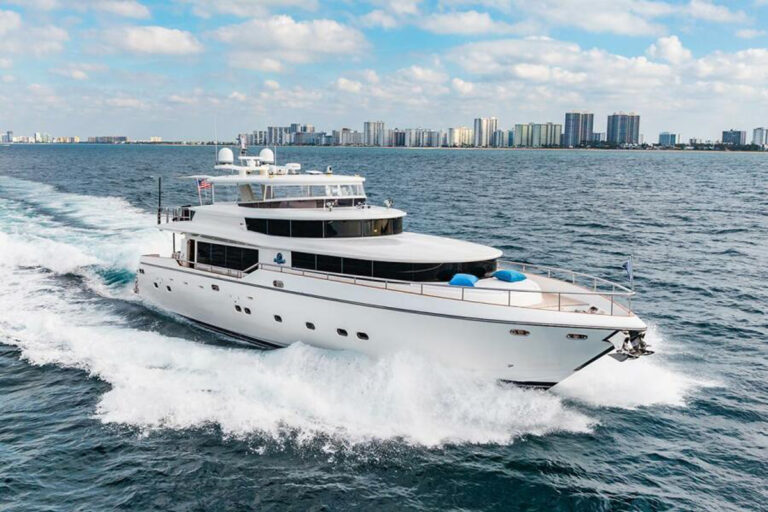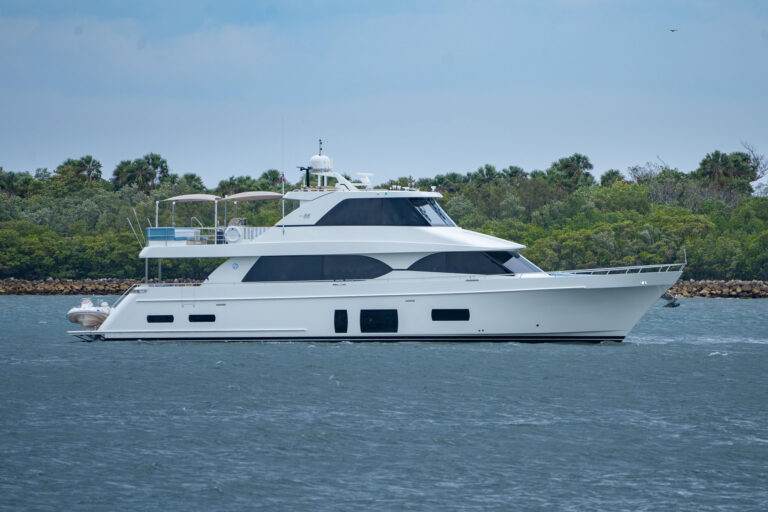
ytgjul17elect525.jpg
I still barely believe it, but the 37-foot Duffy I enthused about in my first column (See “Electronics: The Gizmo Manifesto,” June 2009) really is mine. Moreover, I did actually install a Class B AIS transponder on Gizmo before making the trip from Connecticut to Maine in late April, and that really did prove itself a worthwhile move.
Having AIS aboard certainly wasn’t necessary while puttering by Newport and up Buzzards Bay in daylight, but it was comforting to see much of the big commercial traffic plotted by name, and in detail, on the laptop I’d also brought along. And having that detail made it easy to call some of those ships on VHF to ask if we were appearing on their AIS target displays. After all, Class B-type transponders were just approved by the FCC for use along U.S. coasts last fall and few of us have much real-world experience with them. Plus, there are a few known kinks in the technology that I’ll discuss here.
The transponder truly began to make a difference that evening. The forecast for the days ahead suggested that the smart strategy was to endure a brief frontal passage and use the following calm to make miles through the night, but that meant crossing the Boston shipping lanes in pitch dark and possibly rain. Knowing that we’d have excellent info on at least the major vessels we might cross, and some of them on us, tipped the scales of prudency, and we proceeded.
That 10-mile stretch east of Boston was still the most tense of the trip, but it could have been worse. Though ships were crossing our intended track from both directions, the system I used, Coastal Explorer 2009, easily calculated their closest point of approach (CPA), even as we or they changed course or speed. Plus, its accurate and informative plot of what looked like an over-lit Walmart Super Store parked in our path helped us understand that it was a giant tanker tied up to a lit mooring buoy. We would not have figured that out from our radar.
But the icing on the cake came when a passenger ship leaving Boston called us by name to discuss our crossing, and to ask kindly if we were aware of the mooring field (which is an odd thing to encounter 12 miles offshore). He probably wouldn’t have bothered if we were just a tiny blip on his radar screen. With that call, Gizmo felt like she really was part of the extensive Automatic Identification System, and it happened during my first 24 hours with Class B along our coast.
Which is not to say that Class B, or AIS overall, is without issues. The Class A units, which have been mandatory on most ships for years, are still putting out too much bad data, though it’s usually extraneous. Poorly interfaced compasses give some targets a bogus heading line, for instance, though their GPS course over ground lines tell the true story. The complication of entering boat dimensions relative to the transponder’s GPS location has led to some targets that scale bizarrely when zoomed in. And many crews aren’t good about user-entered trip info, which is why some vessels with the navigation status “moored” are actually underway, and vice versa.
Thankfully, the Class B hardware design is much simpler. Its installation is nearly impossible to mess up, and there is no user-entered voyage data not to enter properly. Plus, the U.S. authorities have ruled that a boat’s “static data”- that is, her name, type, call sign, dimensions relative to GPS, and MMSI number-must be professionally entered, which should ensure its validity (but does make the purchasing and installation process more complicated).
However, Class B transponders only broadcast at 2 watts, versus Class A’s 12 watts. In my Class B experience so far (there was also a 500-mile passage in 2007, outside U.S. waters), I’ve been pleased that ships usually first see me at six to ten miles, but some users don’t feel that’s good enough offshore. And B vessels only send out their position message every 30 seconds, at best, while A vessels update theirs at a rate similar to radar scanning-24 times a minute. Thus an A target moves fairly smoothly across a plotting screen, much like a radar blip, while a B target, especially one that’s maneuvering, can stutter about. While I haven’t yet plotted enough B targets to develop an opinion, there are those that feel the plotting confusion will push some vessels toward filtering out Class B targets, which is a possible option on some plotters (though I’m not sure it should be, or will be forever).
There’s also a small problem with the Class B static data message, which, like that of Class A, gets sent out every six minutes (that’s why you often see targets well before you get their full ID). Quite a few older Class A transponders cannot decipher that message until their software is updated, and hence those ships will not see your name, boat type, etc., even after six minutes. They will, however, see your “dynamic” data message-position, course, speed, and MMSI-which is better than nothing, and the affected units are being updated.
If these details are making you a little leery about Class B AIS, that’s not a bad thing. We must resist expecting too much too soon from this much-admired technology. It’s important to know, for instance, that while many ships are now broadcasting Class A perfectly, the AIS plotting facilities on their bridges are often way behind what’s possible on many yacht displays (though new equipment mandates are going to fix that eventually). And note that thousands of U.S. coastal commercial vessels like ferries and fishing boats are not yet required to carry any kind of AIS. The U.S. Coast Guard is now working on mandates, which may permit them to use Class B.
One easy way to get an initial feel for AIS is via the several websites that plot vessels using shore-mounted receivers. I favor www.siitech.com as its free pro viewer counts the transponder types in view, and thus is showing me how quickly Class B use is growing along our coasts. Another useful resource, if I do say so myself, is my electronics blog, accessible via www.yachtingmagazine.com. I’ve been following AIS developments for years and now have two Class B-equipped boats to test. I will probe issues like range and slow updating, but remain confident that Class B is an excellent collision-avoidance tool, as long as we keep our expectations real.









